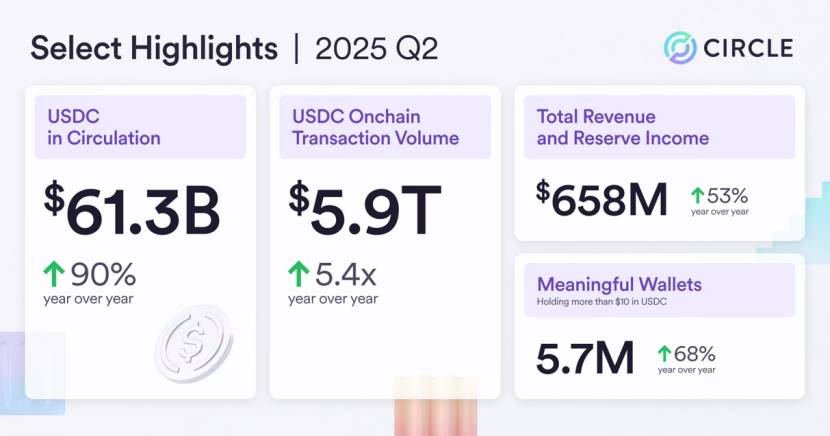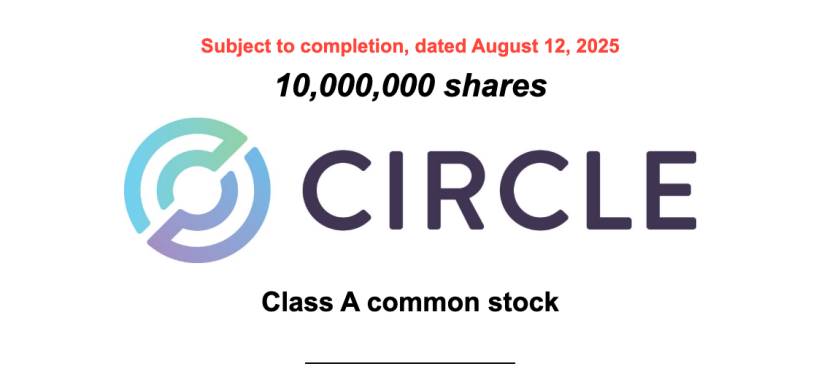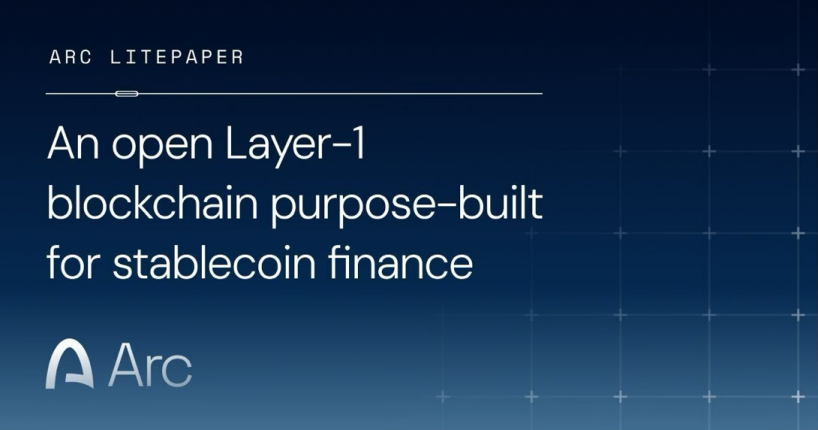From a single stablecoin issuer to a global digital financial infrastructure provider, this transformation journey is full of uncertainties.
Written by: Umbrella, David
Just last night, stablecoin USDC issuer Circle released its Q2 earnings report.
As its first financial report post-IPO, the data provides the market with important insights to assess the true value of this "stablecoin first stock." By deeply analyzing key financial indicators, we can see more clearly Circle's growth momentum and potential challenges.
USDC Strong Expansion, but Revenue Structure is Unbalanced
From the information disclosed in the financial report, the following data points need to be highlighted.
- Core Business Indicators: Strong Expansion of USDC
Firstly, the most notable aspect of the financial report is the dual growth of USDC circulation and market share.
As of the end of Q2, USDC circulation reached $61.3 billion, a staggering 90% year-on-year increase, and a 49% increase year-to-date. As of August 10, this figure has further climbed to $65.2 billion, indicating its sustained growth momentum. In terms of stablecoin market share, USDC firmly holds about 28% of the market, solidifying its position as the second-largest stablecoin.
Secondly,USDC trading activity has seen explosive growth.
USDC on-chain transaction volume reached $5.9 trillion, a year-on-year surge of 540%. This explosive growth in this metric not only reflects the rapid expansion of USDC use cases but also reveals an important trend where the entire stablecoin ecosystem is transitioning from mere value storage to payment and settlement tools.

- Financial Performance: Strong Revenue Growth but Structural Imbalance
The financial report shows that total revenue in Q2 reached $658 million, a 53% year-on-year increase, of which:
Reserve Interest Income: $634 million (96.4% of total), a 50% year-on-year increase
Subscription and Service Revenue: $24 million (3.6% of total), a 252% year-on-year increase
In this revenue structure, Circle's reliance on reserve interest income is still evident. Although subscription service revenue grew at an impressive 252%, its absolute value remains small.
Circle is highly dependent on the reserve income brought by the Federal Reserve's high interest rate environment, and this reliance on a single revenue source poses its greatest operational risk. Once the Federal Reserve enters a rate-cutting cycle, Circle's profitability will face severe challenges.
Additionally, a point that can easily be overlooked is that the high costs associated with the IPO mask the actual operational performance.
If we look at the overall picture, Circle's net loss in Q2 reached $482 million. While this figure is large in absolute terms, when broken down:
Total non-cash expenses related to the IPO amounted to $591 million
Equity incentive expenses: $424 million
Fair value adjustments of convertible bonds: $167 million
Adjusted EBITDA (earnings before interest, taxes, depreciation, and amortization) was $126 million, a 52% year-on-year increase.
In other words, excluding IPO-related expenses, Circle's actual operational performance remains robust. The adjusted profit indicators show that the company's core business continues to grow healthily, which also explains why the stock price rose after the earnings report was released.
- Cash-Out Pressure Under High Valuation
On the same day the financial report was released, Circle also announced a secondary offering of 10 million shares.
Based on the closing price of $163.21 on that day, this offering will raise $1.63 billion. Compared to the IPO price of $31, early investors have seen a return of over 426%, with cash-out amounts exceeding $1 billion.
Among them, Circle's CEO Allaire has sold 357,800 shares but still retains 23.9% voting power.

From the above financial report data, it can be seen that the network effect of USDC is accelerating. However, Circle's challenges are also significant:
The revenue structure is overly reliant on the interest rate environment, competitors are constantly emerging (such as PayPal's PYUSD), and the uncertainty of regulatory policies are all issues that must be faced.
The Q2 financial report provides a basis for assessing whether Circle is overvalued, but the final judgment will require observing the performance in the coming quarters, especially Circle's response capabilities in the event of changes in the interest rate environment.
Strategic Transformation: Circle's Path to Diversification
The strategic initiatives disclosed by Circle in the Q2 financial report and subsequent conference call clearly outline the company's path from a stablecoin issuer to a comprehensive financial infrastructure provider.
This may also be a response to the issue of a single revenue structure disclosed in the financial report.
Circle announced that it will launch a self-developed blockchain called Arc in the second half of 2025, and this news quickly became a focal point of market discussion. According to official disclosures, Arc is an open public chain designed specifically for stablecoin finance, using USDC as the native gas fee token, focusing on applications such as payments and foreign exchange.

Interestingly, stablecoin giants seem to have chosen the same path.
The issuer of USDT, Tether, is developing Stable, while payment giant Stripe has teamed up with top VC Paradigm to launch Tempo. The competition around stablecoin payment chains has already begun, and just today, OKX announced an upgrade to X Layer to enter the payment chain sector.
In this competition, Circle's advantages are evident: compared to Tether, which faces regulatory pressure, Circle has a unique compliance advantage, and the GENIUS Act promoted by the Trump administration has cleared policy obstacles for it; compared to the payment-experienced Stripe, Circle benefits from the network effect brought by its 24% market share of USDC and the trust of over 1,800 institutional clients.
The deeper business logic is that the launch of Arc directly addresses Circle's biggest weakness—over-reliance on interest income.
Currently, 96% of Circle's revenue comes from the interest on USDC reserves in government bonds, and this reliance will become a fatal weakness when a rate-cutting cycle arrives. By controlling blockchain infrastructure, Circle can not only earn on-chain transaction fees but also open up new revenue models such as staking, while reducing dependence on third-party blockchains and decreasing the growing distribution costs.
In addition to launching its self-developed public chain Arc, Circle also mentioned in the Q2 financial report and conference call that it will deepen cooperation with companies such as Binance, FIS, and Corpay.
This includes promoting the use of Circle wallet technology with Binance and utilizing the tokenized market fund USYC for institutional trading products on Binance as revenue and off-chain collateral; combining global foreign exchange with USDC with Corpay to provide 24/7 settlement services for businesses worldwide; and partnering with FIS to enable U.S. financial institutions to provide domestic and cross-border USDC payments through FIS's Money Movement Hub, combining Circle's blockchain-native infrastructure with FIS's real-time payments to unlock faster and lower-cost compliant digital dollar transactions.
In addition to these three companies, Circle also mentioned in the financial report its cooperation direction with mainstream exchange OKX and fintech company Fiserv.
Overall, Circle's Q2 financial report presents a portrait of a company in a critical transformation period. It is both a leader in the stablecoin sector, enjoying the growth dividends brought by the USDC network effect, and a fintech company facing structural challenges that must reshape its business model before the arrival of a downward interest rate cycle.
As a star company in this year's stock market, Circle truly deserves the title. However, beneath the halo of being the first stablecoin stock, investors need to be acutely aware of the challenges it faces. The transformation from a single stablecoin issuer to a global digital financial infrastructure provider is fraught with uncertainties. Whether Circle can continue the myth of a tenfold increase in stock price post-IPO remains to be seen.
免责声明:本文章仅代表作者个人观点,不代表本平台的立场和观点。本文章仅供信息分享,不构成对任何人的任何投资建议。用户与作者之间的任何争议,与本平台无关。如网页中刊载的文章或图片涉及侵权,请提供相关的权利证明和身份证明发送邮件到support@aicoin.com,本平台相关工作人员将会进行核查。




